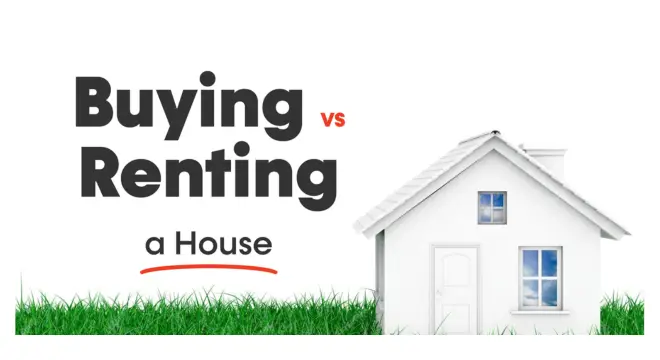Texas Housing Market Slows Down as Listings Hit 14 Year High
April was supposed to bring momentum. Spring is when the Texas real estate market usually comes alive—buyers start shopping, sellers rush to list, and deals start closing fast. But this year? April delivered the slowest home sales performance of 2025 so far.
That’s not just surprising—it’s a red flag.
Despite more than 141,000 active listings, the highest since 2011, buyers didn’t bite. Even with options flooding the market, sales dropped 3.4% year over year. In hot metros like Austin and Dallas-Fort Worth, the drop was even steeper.
So what’s going on?
This isn’t just about high mortgage rates. We’re seeing something deeper—a shift in buyer behavior. People are more cautious. Many are priced out. And even those who can afford to buy? They’re hesitant. They’re waiting, watching, and thinking twice before signing.
If you’re in the market right now—whether as a buyer, seller, or investor—this shift matters. A lot.
Because when spring doesn’t deliver, it changes the rhythm for the whole year.
Have you noticed listings sitting longer in your neighborhood—or are you holding back from making a move? Let me know. I’d love to hear how this market feels on the ground for you.
Why So Many Homes Are Suddenly for Sale?
Let’s start with what’s probably on your mind: If homes aren’t selling, why is inventory still going up?
It’s a fair question. And the answer comes down to two things I’ve been watching closely.
First—homeowners are done waiting. For over a year, people who bought when rates were 3% held off listing their homes. They didn’t want to give up those low payments. But that patience is wearing thin. Life moves on—people need to relocate, upsize, downsize, or cash out. And they’re realizing rates might not drop drastically anytime soon.
Second—Texas has been building like no other. Outside of Florida, no state added more homes over the past five years. And now, that pipeline is hitting the market fast. In April alone, over 60,000 new listings came online across Texas—15% more than last year.
So what you’re seeing isn’t panic—it’s momentum. Sellers are stepping in, and builders are pushing supply forward.
The Real Problem—Buyers Are Still Pulling Back

Now here’s where it gets tricky.
Even with all this new inventory, buyers haven’t come back in the way you’d expect. And if you’re thinking, “It must be the interest rates,” you’re absolutely right—but that’s just part of it.
Rates hovering around 6–7% are tough to swallow, especially with home prices still historically high in many cities. But on top of that, buyers today are facing extra costs no one talked about five years ago—like higher homeowners’ insurance, inflated HOA fees, and tighter lending standards.
I talk to people all the time who are pre-approved and ready—but they’re scared of overpaying. Some are watching the market closely for better deals. Others are trying to figure out if they should rent for another year.
So while sellers are showing up, buyers? Not quite. And that gap is creating pressure—especially in key metro areas.
If you’re still running numbers, here’s a breakdown of the monthly cost of a $431K home at current rates—it’s eye-opening when you add in insurance and taxes.
How It’s Playing Out in Austin, Dallas, Houston & Beyond?
Let me break it down for you, because real estate in Texas isn’t one-size-fits-all. Each metro tells its own story—and that’s where things get interesting.
According to Newsweek, in Austin–Round Rock–San Marcos, home sales dropped 13% in April compared to last year. But at the same time, listings shot up nearly 27%. That kind of imbalance is a clear sign that sellers are chasing fewer and fewer buyers.
Dallas-Fort Worth saw an even bigger surge in inventory—up nearly 39.4%, with over 32,000 active listings in April. Sales were down 5.4%. That’s a lot of supply building up without the usual demand to match.
Houston felt the shift too. Sales dropped just under 3%, but listings exploded—up 37.6%, reaching over 35,000 homes on the market. By May, Houston home prices began to fall 1.5% year-over-year—the sharpest drop since late 2023.
Even in San Antonio, prices dipped by 1%. Days on market are creeping up across all these cities, giving buyers more leverage and pushing sellers to lower prices or offer concessions up front.
This isn’t a trend anymore—this is the new normal, at least for now.
If you’re planning to buy this year, these smart strategies to buy a home in 2025 might help you approach the market with more clarity.
What’s Happening to Prices?
Prices across Texas are either flat or starting to fall. In April, statewide home prices were up just 0.3% year-over-year—the slowest growth we’ve seen since August 2023.
In Austin? Prices fell 2.1%.
Dallas dipped 0.4%.
San Antonio was down 1%.
And Houston, which held steady in April, saw a 1.5% drop by May—the steepest slide in nearly a year.
And if inventory keeps rising (which it likely will), that pressure is only going to build. Sellers will need to adjust their expectations fast.
I’ve been seeing a lot of local insights and price shifts pop up lately—some of which we’ve been tracking through quick updates that go out during the week. If you like staying ahead, it’s worth tapping into real-time alerts where we post early signs of market movement.
What Happens Next? Look at the Pipeline
I know what you’re wondering now—is this just a blip, or is it going to get worse?
Let’s look at the numbers.
In April, single-family permits in Texas were up 7.6% year to date, according to the Texas Real Estate Research Center. That means builders are still moving forward, and more new homes are coming this summer.
Then in May Texas inventory climbed to 186,452 homes—up 19% year over year. That included nearly 50,000 new listings, showing that this supply surge is far from over.
So here’s what that tells me: unless buyer activity picks up significantly, we’re going to see even more price softening—especially in areas where inventory is stacking up fast.
If you’re buying, this is your chance to negotiate.
If you’re selling, this is your signal to price smart, not high.
And if you’re investing—watch the metro trends closely. The opportunities (and risks) are both growing.
It reflects a broader U.S. trend where sellers now outnumber buyers for the first time in over a decade, shifting the dynamics in many local markets.
What Buyers, Sellers & Investors Should Really Focus On Now?

Let’s cut through the noise.
If you’re buying, this isn’t just about price tags—it’s about leverage. You now have more negotiating power than you’ve had in years. Sellers are offering price cuts, covering closing costs, and even throwing in upgrades just to keep deals alive.
Here’s what I’d recommend:
- Look closely at homes that have sat for 30+ days — they’re often overpriced and ripe for negotiation.
- If you’re stretching your budget, ask about seller-paid rate buydowns or assumable mortgages (some sellers still have 3% loans they can transfer).
- Don’t skip inspections, even on new builds—this isn’t 2021 anymore.
If you’re selling, you’ve got a tougher job. That means:
- Price realistically, based on what’s selling now — not what sold six months ago.
- Stage smart—buyers expect more when inventory is high.
- Consider offering small perks (appliance upgrades, home warranties) to stand out.
And for investors? Watch for tired listings in up-and-coming neighborhoods. This is the market where off-market deals, value-add flips, and medium-term rentals can really shine—but only if you buy right.
What Should You Do Right Now?
Let me be honest—there’s no “perfect” time to buy or sell. But there is a smart way to play it, depending on your situation.
If you’re a buyer, don’t rush—but don’t sit still either.
- Get pre-approved so you’re ready if the right home pops up.
- Focus on areas with rising inventory and softening prices.
- Ask your agent about assumable loans—they’re rare, but golden if you find one.
If you’re a seller, be realistic.
- Review local comps weekly.
- Be open to pricing adjustments early—not after your listing has gone stale.
- Bonus: ask your agent to offer 2–1 buydown incentives for buyers—it’s working in many metro areas.
And if you’re an investor, the best deals aren’t always on the MLS.
- Look at probate properties, off-market duplexes, or tired listings with 60+ DOM.
- Focus on areas with population growth but temporary listing spikes.
Whatever role you’re playing in this market—you need to stay informed, stay flexible, and move with strategy—not emotion.
Final Thoughts
Here’s the bottom line.
The Texas real estate market isn’t collapsing. But it is changing—and fast. If you approach it with the same mindset as 2021 or even 2023, you’re going to miss opportunities—or worse, make costly mistakes.
What we’re seeing is a natural correction driven by affordability, overbuilding, and higher borrowing costs. And in a weird way, that’s healthy. It gives smart buyers a chance to negotiate. It forces sellers to be more honest. And it opens the door for long-term investors to buy at better values.
So don’t panic—but don’t ignore the signals either.
Want more updates like this one? Head over to our Real Estate & Homeownership section for real-time trends, price breakdowns, and smart strategies.
Disclaimer: This article is for informational purposes only and does not constitute financial or real estate advice. Always consult with a licensed realtor or financial advisor before making property decisions. Market conditions can vary by region and change over time.


